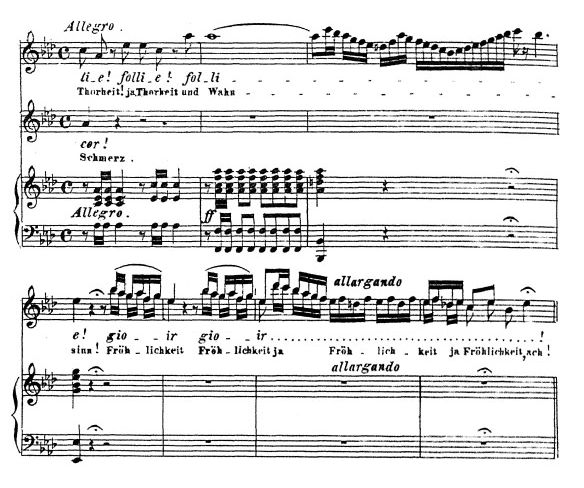
Vowels Sticking
Sticky vowels can be a big issue as we try to move around our vocal home.
What is a sticky vowel? Basically, this is just a funny way to point to a serious truth. It is when the vowel gets stuck in a certain adjustment and does not change with the ascending or descending pitch.
It is like trying to sing a pure wide open [ah] all the way up; keeping it in the front as a feel. Or when the vowel is rounded at the top and one attempts to sing that same way in the middle of the voice. If one sings an [ah] vowel on a medium low note there is a quality like the [ah] as in the word “father.” As we sing higher, the vowel should automatically shift to a more rounded [ah] as in the word “sorry.” Automatically. This vowel shifting is dependent upon correct registrational adjustments.
The vowel is first physically formed in the vocal cords with the cords taking a different shape for different vowels. That info is transmitted to the oro-pharynx which mostly completes the shaping with some finishing touches by the front of the mouth, but this diminishes as the scale ascends. Therefore, yes, the vowel does shift or modify or round or darken as we sing up the scale. But, this is not something that we should be consciously doing for we will do too much or too little; disturbing the working of the voice by not allowing the subconscious mind & autonomic nervous system to take control and accomplish the multiple minute adjustments needed.
Be assured, conscious direct control over the minutiae is not possible. It is like trying to walk up steps by attempting to consciously control and flex and move every single muscle in the body involved with the “walking up the steps” process. Try it. It does not work.
Further, this means that we cannot fix the voice through the process of conscious and overt vowel modification, but must train the voice through the principles of registration which is done through certain patterns of exercises that reflexively stimulate the vocal muscles. Correct movements, accompanied by correct feel, appear in response.
We go through this process of letting go of pre-concepts and need for direct control so as to experience the muscles showing us what they know. Then, we become educated as to the right feel and thought. We can give a conscious command and step out of the way; allowing the subconscious mind to finish the task.
To recap, as we ascend the scale there is less length, less width, and less depth of vocal cords vibrating for the pitch. Our step gets taller and smaller, has a feeling of being more gathered up, and leans back. As the “registration” – the cords and muscles that adjust them – shifts so that we can sing higher, obeying the laws of physics, then the vowel that stands on the smaller pitch step must be smaller in size as well as having a slightly different shape as the steps go back.
If the vowel gets sticky, we are in trouble. Some examples of trouble: if the vowel stays too big in size on the way up or too little on the way down, or if the vowel does not change its shape (pure to a little rounded as ascending and vice versa). The trouble is that the stuck vowel does not match up with the registrational adjustment. Due to interconnection, then there is a disturbance of all the parts. Vowel, pitch step, consonants, breath flow are all out of whack.
However, when all is lined up, when the vowel shifts in response to a proper registrational shift, then all is right in the vocal world!
about the author
Allen Rascoe Allen has been enjoying singing since he was a little kid. He officially studied voice at ECU and USC. However, he ran... Read More

RECENT ARTICLES
-

Career Your Opportunities for a Fulfilling Career in Singing
-

Basic Skills, Beginners, Tips Tips To Improve Your Singing Voice
-

Exercises, Warmups 10 Vocal Warm-ups to Change the Way You Sing
-

Basic Skills, Beginners, Exercises, Songs, Voice Teachers, Warmups What is My Vocal Range – Identify, Master and Expand Your Range
RECENT IN KNOWLEDGE
Recent Topics
- Beginning Voice Lessons (1)
- Breathing Techniques (1)
- Confidence (1)
- Experienced Teacher (1)
- Kids Singing Lessons (1)
- Musical Career (1)
- Practice (1)
- Private Lessons (1)
- Professional Singer (2)
- Sing (1)
- Singing Teachers (2)
- Style (1)
- Teach Online (1)
- Vocal Exercises (1)
- Vocal Health (1)
- Vocal Music (1)
- Vocal Pitch (3)
- Vocal Range (4)
- Voice Coach (1)
- Voice Exercises (2)
- Voice Training (4)
- Young Vocalist (1)
Categories
- Basic Skills (7)
- Beginners (8)
- Career (2)
- CCM (1)
- Contemporary Commercial Music (1)
- Crossing Over (1)
- Exercises (2)
- Online Lessons (3)
- Online Voice Lessons (1)
- Songs (2)
- Students (6)
- Tips (4)
- Vocal Coaches (1)
- Voice Teachers (2)
- Warmups (2)
Testimonials

















